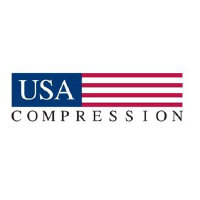
Rede D'Or Sao Luiz SA
BOVESPA:RDOR3


| US |

|
Johnson & Johnson
NYSE:JNJ
|
Pharmaceuticals
|
| US |

|
Berkshire Hathaway Inc
NYSE:BRK.A
|
Financial Services
|
| US |

|
Bank of America Corp
NYSE:BAC
|
Banking
|
| US |

|
Mastercard Inc
NYSE:MA
|
Technology
|
| US |

|
UnitedHealth Group Inc
NYSE:UNH
|
Health Care
|
| US |

|
Exxon Mobil Corp
NYSE:XOM
|
Energy
|
| US |

|
Pfizer Inc
NYSE:PFE
|
Pharmaceuticals
|
| US |

|
Palantir Technologies Inc
NYSE:PLTR
|
Technology
|
| US |

|
Nike Inc
NYSE:NKE
|
Textiles, Apparel & Luxury Goods
|
| US |

|
Visa Inc
NYSE:V
|
Technology
|
| CN |

|
Alibaba Group Holding Ltd
NYSE:BABA
|
Retail
|
| US |

|
JPMorgan Chase & Co
NYSE:JPM
|
Banking
|
| US |

|
Coca-Cola Co
NYSE:KO
|
Beverages
|
| US |

|
Walmart Inc
NYSE:WMT
|
Retail
|
| US |

|
Verizon Communications Inc
NYSE:VZ
|
Telecommunication
|
| US |

|
Chevron Corp
NYSE:CVX
|
Energy
|
Utilize notes to systematically review your investment decisions. By reflecting on past outcomes, you can discern effective strategies and identify those that underperformed. This continuous feedback loop enables you to adapt and refine your approach, optimizing for future success.
Each note serves as a learning point, offering insights into your decision-making processes. Over time, you'll accumulate a personalized database of knowledge, enhancing your ability to make informed decisions quickly and effectively.
With a comprehensive record of your investment history at your fingertips, you can compare current opportunities against past experiences. This not only bolsters your confidence but also ensures that each decision is grounded in a well-documented rationale.
Do you really want to delete this note?
This action cannot be undone.

| 52 Week Range |
25.15
47.44
|
| Price Target |
|
We'll email you a reminder when the closing price reaches BRL.
Choose the stock you wish to monitor with a price alert.

|
Johnson & Johnson
NYSE:JNJ
|
US |

|
Berkshire Hathaway Inc
NYSE:BRK.A
|
US |

|
Bank of America Corp
NYSE:BAC
|
US |

|
Mastercard Inc
NYSE:MA
|
US |

|
UnitedHealth Group Inc
NYSE:UNH
|
US |

|
Exxon Mobil Corp
NYSE:XOM
|
US |

|
Pfizer Inc
NYSE:PFE
|
US |

|
Palantir Technologies Inc
NYSE:PLTR
|
US |

|
Nike Inc
NYSE:NKE
|
US |

|
Visa Inc
NYSE:V
|
US |

|
Alibaba Group Holding Ltd
NYSE:BABA
|
CN |

|
JPMorgan Chase & Co
NYSE:JPM
|
US |

|
Coca-Cola Co
NYSE:KO
|
US |

|
Walmart Inc
NYSE:WMT
|
US |

|
Verizon Communications Inc
NYSE:VZ
|
US |

|
Chevron Corp
NYSE:CVX
|
US |
This alert will be permanently deleted.
Rede D'Or Sao Luiz SA
Rede D'Or São Luiz SA stands as a prominent figure in Brazil's healthcare landscape, weaving its narrative through a network of hospitals and healthcare facilities that span the country. Founded in 1977, the company has cultivated a robust business model focused on the provision of high-quality, comprehensive healthcare services. It operates through a substantial portfolio of hospitals, oncology clinics, and surgical centers, reflecting a commitment to expanding healthcare accessibility and enhancing patient experiences. The company thrives in a space where it addresses the increasing demand for private healthcare services, driven by an aging population and growing affluence in Brazil.
The financial engine of Rede D'Or is powered by a multifaceted revenue stream predominantly comprising hospitalization and associated medical services. The company strategically leverages its vast infrastructure, clinical excellence, and brand reputation to maintain and grow its market share. Investment in state-of-the-art medical technology and facilities further supports its business model, enhancing operational efficiency and service quality. By offering a diversified range of healthcare services, the company ensures a constant and stable flow of revenue, buttressed by long-term contracts and partnerships with insurance companies. This, in turn, allows Rede D'Or to continually reinvest in expanding its network and upholding the high standards that defined its inception.

Rede D'Or São Luiz SA stands as a prominent figure in Brazil's healthcare landscape, weaving its narrative through a network of hospitals and healthcare facilities that span the country. Founded in 1977, the company has cultivated a robust business model focused on the provision of high-quality, comprehensive healthcare services. It operates through a substantial portfolio of hospitals, oncology clinics, and surgical centers, reflecting a commitment to expanding healthcare accessibility and enhancing patient experiences. The company thrives in a space where it addresses the increasing demand for private healthcare services, driven by an aging population and growing affluence in Brazil.
The financial engine of Rede D'Or is powered by a multifaceted revenue stream predominantly comprising hospitalization and associated medical services. The company strategically leverages its vast infrastructure, clinical excellence, and brand reputation to maintain and grow its market share. Investment in state-of-the-art medical technology and facilities further supports its business model, enhancing operational efficiency and service quality. By offering a diversified range of healthcare services, the company ensures a constant and stable flow of revenue, buttressed by long-term contracts and partnerships with insurance companies. This, in turn, allows Rede D'Or to continually reinvest in expanding its network and upholding the high standards that defined its inception.
Revenue Growth: Rede D'Or reported Q3 revenue of BRL 15.6 billion, up 10.6% year-on-year.
Profitability: Net income for the quarter reached BRL 1.5 billion, nearly 20% higher than last year.
Operational Efficiency: Record hospital occupancy at 81%, driven by a 21% increase in surgeries, led to strong operational gains.
Oncology Strength: The oncology segment grew revenue by 28.1% year-on-year, reflecting successful integration and expansion.
SulAmérica Performance: SulAmérica added over 70,000 new clients and improved its consolidated loss ratio by 2 percentage points.
Cost Discipline: Administrative expenses fell by 17.2% year-on-year, and company leverage dropped to 1.54x net debt/EBITDA.
Cash Generation: Operational cash flow for the first nine months reached BRL 6 billion, up 22.6%.













































